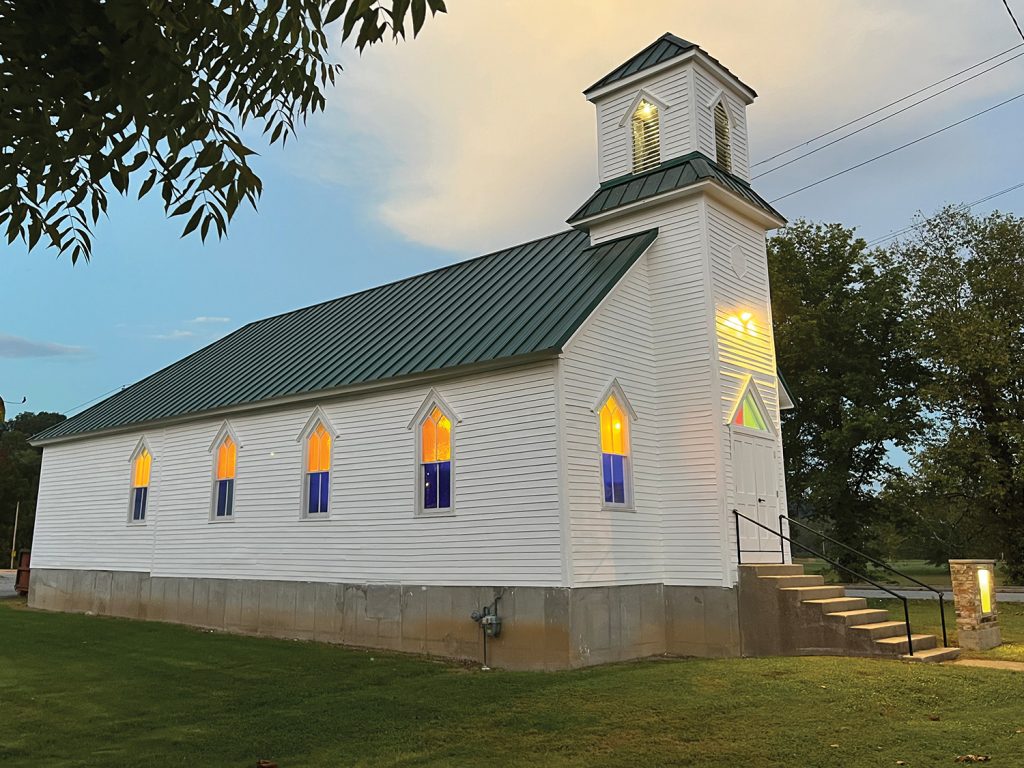
By Richard G. Biever
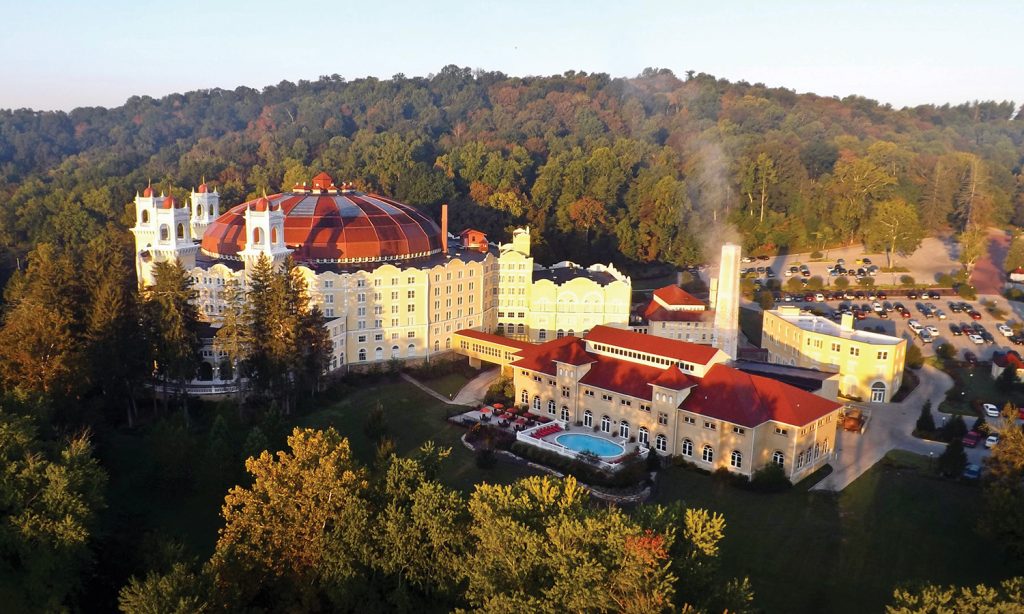
The salvation and revival of the West Baden Springs Hotel 15 years ago was nothing short of a miracle … as much a miracle as raising the architectural marvel in the first place.
Called the “Eighth Wonder of the World” when it originally opened in 1903 for its towering dome above a grand atrium, the posh hotel catered to the nation’s rich and famous in the heady days before the 1929 stock market crash. The Great Depression brought its closure as a hotel, and a half century later the Eighth Wonder was crumbling from neglect.
Just as much a miracle has been another revival that is quietly nearing completion.
Though not as grandiose in design or scale but as equally “too important to lose” for many was a little single-story white clapboard church just down the street and around the corner from the famed hotel. That structure was the home of the First Baptist (Colored) Church of West Baden Springs.
“It’s a miracle to me that it was even there for us to restore,” said Elizabeth Mitchell, a historian and member of the Bloomington Second Baptist Church whose members volunteered to restore the landmark structure.
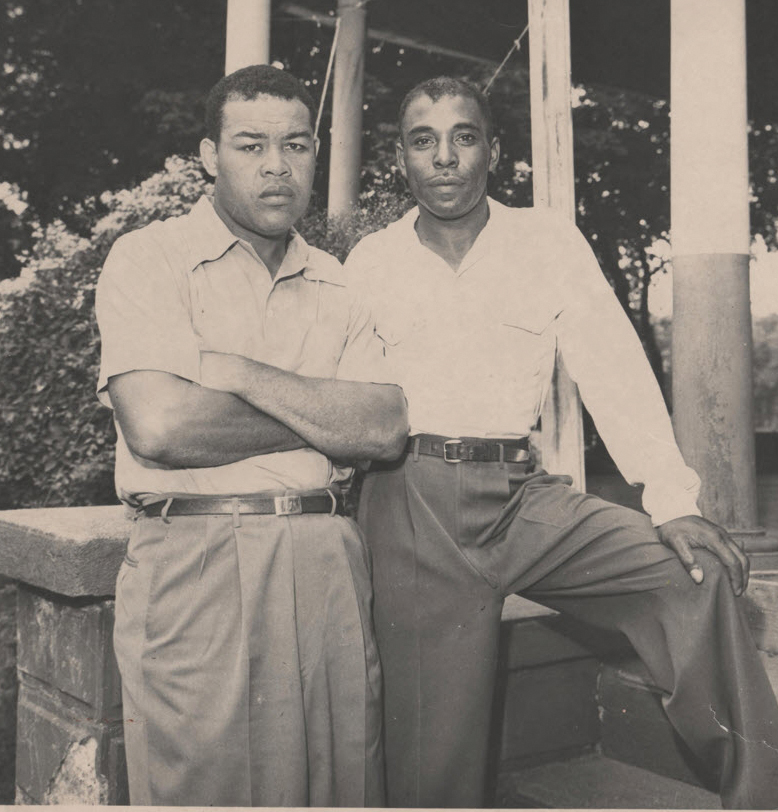
Built in 1920, the church is the last remnant of a once vital, thriving community of African Americans in West Baden and French Lick. People of color were the bellhops, nannies, maids, porters, and waiters recruited to Springs Valley to tend to the daily needs of the wealthy guests at the two large luxurious hotels and mineral spas. Because of racial segregation, the African American community couldn’t be served in the existing white establishments in the towns. They had to have their own hotel, restaurants, barbershops, beauty salons, school, social clubs, and even churches.
And, while the church bore the designation of “Colored” in its name, it was open to all. “We didn’t name it that. The dominant culture put that name on it,” Mitchell added. “That church has a legacy of helping anybody in need, regardless of the color of their skin.”
With the Depression, the West Baden hotel closed and French Lick’s declined. With the loss of jobs, the Black community moved away. Membership at the church dwindled until the church was eventually shuttered. A white Baptist congregation used the building for a while in the 1980s. Then, like the grand hotel, the church, too, sat empty for decades.
When the church was added to the Indiana Landmarks’ 10 Most Endangered List in 2014, the Second Baptist congregation took up the yoke to save it. “Nothing is standing that indicates there were Black people there except for this church,” Mitchell said. “Everything else is gone. That’s why it was so important to save it.”
To celebrate the restoration and thank the volunteers, the donors, and the West Baden/French Lick community, two special services were held inside the church last fall. Now, the historic church that gave hope and inspiration to its congregation in such a dark and shameful time in our nation’s past awaits the hiring of a new pastor and re-dedication — by this spring, it’s hoped.
“It was a beacon of light back then,” said Mitchell, “and will be a beacon of light again.”
Sanctuary and survival
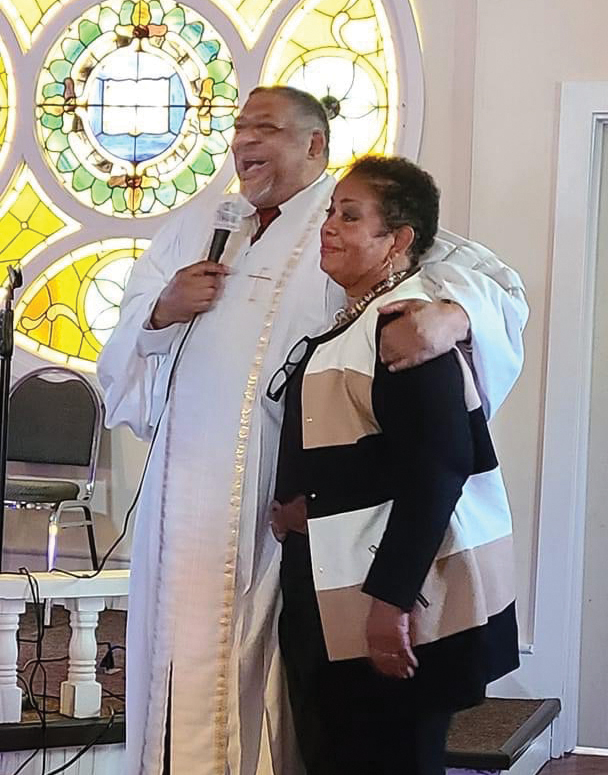
At the turn of the 20th century, Springs Valley was the Las Vegas of the day. Some 14 trains daily carried socialites from around the country to and from West Baden and neighboring French Lick for the advertised “medicinal” waters of Springs Valley spas, the pamper and the pander of the resorts, and the gambling and the cavorting.
While Blacks who migrated to the northern states from the South at the time mostly settled in industrial cities, remote French Lick and West Baden were exceptions.
With their business booming, the hotels actively sought out Black workers for the service positions. “All the service jobs were Black people,” said Mitchell, who was instrumental in raising funds for the church’s restoration and chronicled the project for a documentary. “Somebody had to get the luggage. Some served meals, cleaned the slop jars or changed beds, did the cleaning, did the spas.
“They came to this area because the hotel jobs were good jobs, with good pay — at least for African Americans at the time,” she noted.
But just because they left the South and were holding good jobs necessary for the success of the towns, she said, didn’t mean they left racial segregation. “During Jim Crow, there was a community within a community. Blacks formed their own businesses because we had to go get our hair cut. You had to have another Black person open a shop to do that. So, you had Black dressmakers, tailors … all those had their own businesses.”
A school was established for the children of the Black employees in French Lick. The Hotel Waddy was built and billed as “The World’s Greatest and Complete Negro Health Resort” where Black visitors stayed.
Beyond the security of the palaces of their employment, the Black workers were intimidated by local racists, warned to leave the Valley, and threatened with their lives if they didn’t. And while the French Lick and West Baden white communities and their hotels were fierce competitors at that time, Mitchell noted, the Blacks from both towns and both hotels formed a tight community for their own preservation, their shared values and support for one another.
While an African Methodist Episcopal Church was established in French Lick, a Baptist congregation was begun in 1903 by Eliza Cornish, a respected Black woman in the West Baden community. She called French Lick/West Baden, with the gambling, drinking, and prostitution, “The Devil’s Hell Hole.” “Thus, a church was sorely needed to combat the devilish activities,” Mitchell noted.
The members first met informally at the West Baden opera house and then in homes. In February 1909, Lee E. Sinclair, owner of the West Baden hotel, sold his workers the land for a church building for $1. “Lee Sinclair knew how important faith was to the Black community,” Mitchell noted. “He wanted to make sure his workers had a place to worship.”
In keeping with the competitiveness of the hotels and the towns, Sinclair also didn’t like his employees crossing the tracks to attend the AME Church in French Lick. Mitchell pointed out, though, that many in the Black community attended both churches.
Once completed in 1920, their Baptist Church became a thriving center for religion and culture. The church served as both spiritual and social sanctuary amid a rising tide of new racial tension. At the same time, the Ku Klux Klan re-emerged and became a force in Indiana riling up hatred toward Blacks, Catholics, and Jews.
After the church became vacant in the 1990s, the West Baden Historical Society and then the Town of West Baden took ownership. In the meantime, because of its ethnic heritage, it was listed on the National Register of Historic Places.
Restoration and revival
When the church landed on the endangered landmark list, the Southeastern District Association of the Indiana Missionary Baptist State Convention took note. The association purchased the building for $1 with the promise to restore it.
After surveying the church’s condition, however, there was hesitancy — even among a group of faithful. Dr. Bruce Rose, pastor at the Second Baptist in Bloomington, noted the historical society did what it could to stabilize the building: basement walls had been reinforced; a metal roof had been placed on top. But the structure in between was in dire straits.
They estimated restoration would take a quarter of a million dollars.
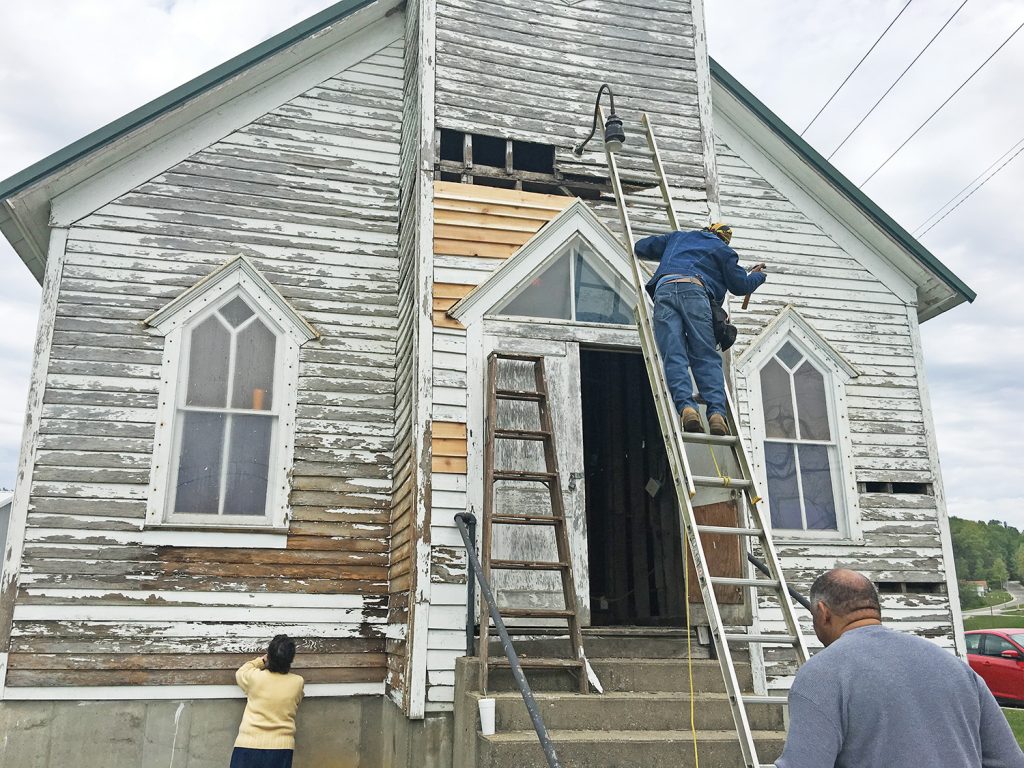
The old walls were bowing outward, and siding was missing. “The animals, the dust, you could see the rafters where they had a fire,” Rose said. “We didn’t know where we’d get the money. We didn’t have the money in the Southeast District treasury to do the project.”
A couple of years passed before the project got rolling because of the daunting task ahead. But finally, Rose said he looked at his own congregation. “We had people with skills and talents. I had a carpenter by trade in the congregation. We also had guys with masonry skills. I really felt like the Lord was saying we needed to take the lead on it,” he said. “And we just went at it.”
The Second Baptist Church in Bedford also came aboard providing volunteers including a skilled plumber.
On the first demolition day, Rose said 25 to 30 volunteers showed up at West Baden from the two churches. They tore out all the old drywall and took the building down to the studs.
Over the course of the reconstruction, the core group of volunteers ended up being six to seven guys, all between the ages of 70 and 80, who faithfully took the hour drive down to West Baden on Wednesdays and Fridays. Through times when donations were plentiful and when they were not, through a worldwide pandemic and their own personal health issues and age, through faith and perseverance, the volunteers brought light and life back into the building.
“We just had a really great, great camaraderie and fellowship,” Rose noted. “And then Liz (Mitchell) came aboard helping with the fundraising. It was just a walk of faith.”
After they stripped the building down, they straightened the bowed walls, and rebuilt floors, doors and windows. The original pews were saved and refinished, and the original bell in the bell tower was restored. They were able to incorporate part of a stained-glass window which had been salvaged from a historic church torn down near Terre Haute.
One of the older volunteers, Ron Williams, who had been a carpenter by profession, told Rose he had prayed the Lord would give him one more opportunity to do a major project before he died. “He also happened to be raised in French Lick. So, it was like a homecoming for him,” Rose said.
Williams became the on-site project manager. But sadly, he died in the spring of 2019 before the completion.
The Second Baptist in Bloomington held different fundraisers suggested by the congregation … such as “Re-Ring the Bell for a Dime a Day” project because most folks could afford $36.50 for the year. A “GoFundMe” page was started. Grants were acquired.
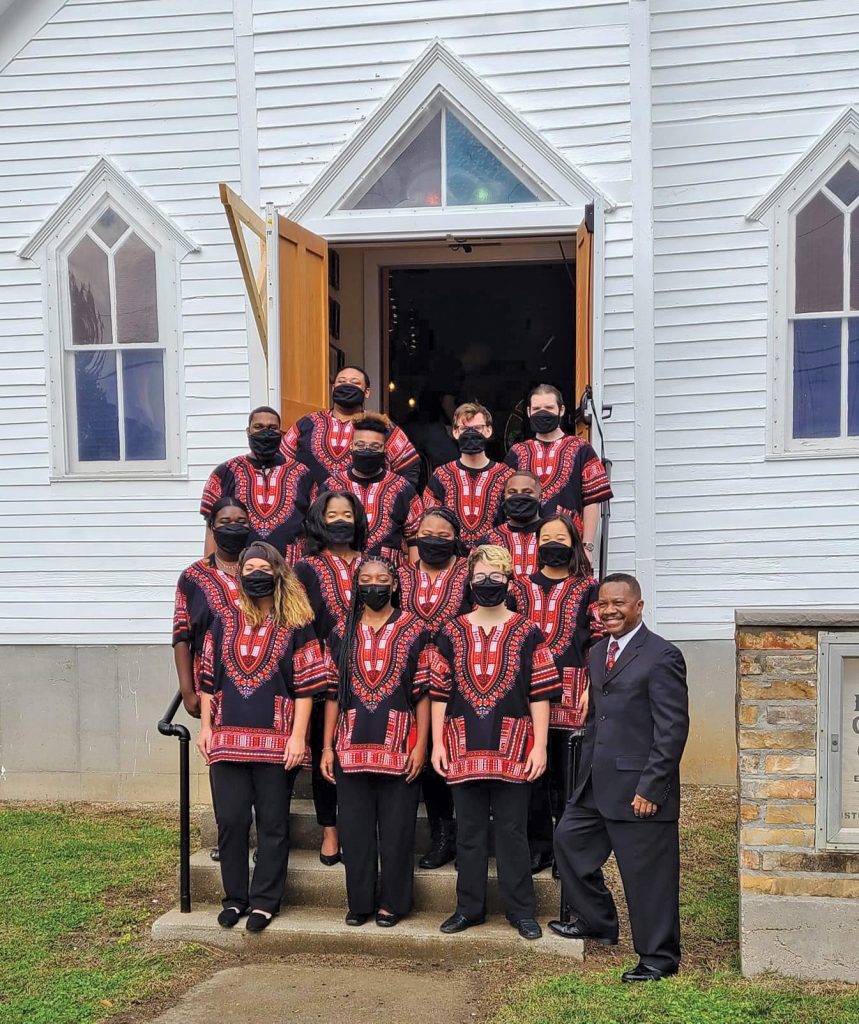
A couple who frequently visited Springs Valley noticed the whole community had been refurbished — except that church. “And that was upsetting to them. That couple,” who wanted to remain anonymous Mitchell said, “gave us a jump start. And from then on, little bit by little, as money came in, we did the work.”
Mitchell said the folks of West Baden and French Lick also got involved. “It wasn’t just outsiders that saw the need. The community saw the need, and they welcomed us. People just helped out on every hand.”
On hot days, local folks would bring lemonade and water. Workers would find $10 bills or notes offering to help stuck in the church door.
The West Baden Springs Hotel provided warehouse space, carpenters who helped sand down and reinforce the pews, and on occasion accommodations so the volunteers could work overnight at key times when they needed to be there, Mitchell said. “They’ve been really good.”
Mitchell said there were trying times for sure. She recalled one afternoon when the project’s fund ran out of money. “It was down to nothing, nothing!” she said. In tears, she turned to Rose who assured her that God hadn’t taken them that far to leave them short. That afternoon, he prayed about it at the altar. And the next day, someone donated $10,000.
“A theme that comes to me over the course of all these years is ‘the Lord will provide,’” said Rose. “Every time we were down to the end, the Lord stepped in right on time. The Lord will provide! And that’s a fact.”
“And anytime we set a date to get things done, it didn’t happen. So, it wasn’t our call to make,” added Mitchell. “We have so many miracle stories like that.”
“It’s been a labor of love,” Rose said. “I can’t wait to turn the keys over and say, ‘Look what we were able to accomplish. Praise the Lord!’”
RICHARD G. BIEVER is senior editor of Indiana Connection. Additional sources for this story include WTHR, Channel 13, Indianapolis; Indiana Landmarks.



